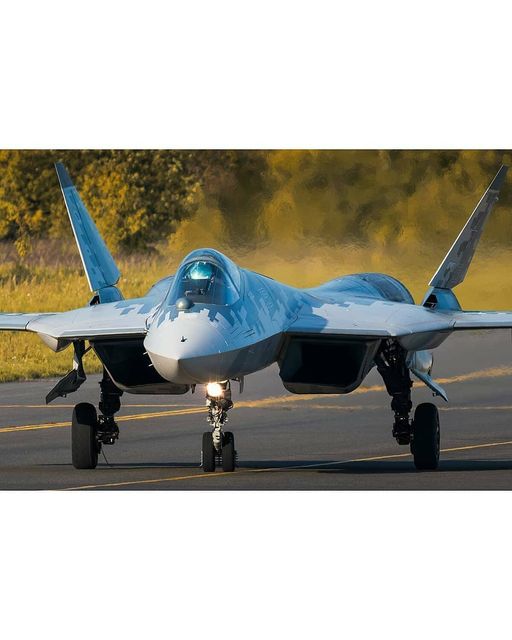Little is known about how much of a threat Russia’s 5th-generation Su-57 poses to adversaries.
Russian media says many things about the airframe’s performance parameters, yet little seems to be known about its computing, weapons interfaces, sensing, and manned-unmanned teaming capabilities.
Certainly looking at the configuration, the Su-57 does look stealthy with its blended-wing body and rounded fuselage.
However, how might it compare with the F-35 in regard to sensing and high-speed, AI-enabled computing able to gather sensor input from disparate pools of data and perform immediate analysis and organization to present integrated information to a pilot?
Additional specs on the Su-57 suggest it can hit speeds of Mach 2 and travel ranges out to 2,200 miles.
This makes the jet slightly slower than an F-22, which can reportedly hit speeds of Mach 2.25. Also, the Su-57 may not have a thrust-to-weight ratio able to rival an F-22, meaning it may not be as competitive as a complete air-dominance platform such as the F-22.
It is reported that the Su-57 has an AESA, or Active Electronically Scanned Array radar and phased array radar, supported by extensive electronic countermeasures.
Further detail suggests the Su-57 operates with an F/A-18-like Infrared Search and Track targeting technology, which among other things, enables fighter jets to operate in a high-threat “jamming” environment.
How many Su-57s Does Russia Have?
Regardless of the extent to which the Su-57 can truly rival U.S. 5th-generation aircraft, Russia’s next-generation aircraft primarily suffers from a numbers problem. There are just not that many of them, as multiple public reports say there are currently somewhere between four and 15 operational Su-57 aircraft, and Russia’s TASS news agency has reported plans for the country to acquire 76 Su-57s over the next five years.
The U.S., for example, operates as many as 300 F-35s or more, and that is not including the fast-arriving NATO and European F-35s, so this gives the U.S. and NATO a sizeable margin of superiority when it comes to a possible air superiority war with the Su-57.
There is also the question of manned-unmanned teaming, as Russian media reports have made mention of efforts to connect drones with manned fighter jets using what the U.S. Air Force refers to as a “loyal wingman” type of scenario.
The U.S. Air Force, for instance, has shown that its Valkyrie drone is able to share real-time data with an F-35, and it does not seem at all clear that Russia’s Su-57 is in any way capable of such use of technology.
Russia’s Izvestia news reports that the Su-57 is working to network with Russia’s S-70 Okhotnik B-drone. The extent of Russian progress with this may be unknown, in terms of whether the Su-57 can operate with the ability to control drones in real-time.
